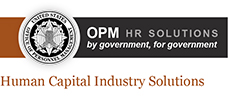Situational Leadership
Course Description
Situational Leadership is a model for developing individuals and teams over time, so they can reach their highest level of performance on specific goals. Research, conducted by Paul Hersey and Ken Blanchard, produced the Situational Leadership model for assisting managers in recognizing the leadership style they prefer to use and compare that with what is most useful to the people they are managing and developing. The research shows that management/development is most effective when managers use the style that works best for their staff’s level of competence and commitment.
Situational Leadership is a process for helping people become self-motivated and self-directed. It is a model based on the relationship between a person’s development level (competence and commitment) on specific goals and the leadership style (direction and support) the leader provides. Effective leadership results by matching the appropriate leadership style to a person’s developmental level.
Learning Objectives
Successful completion of this course will increase your knowledge and ability to:
- Opens up communication—increases the frequency and quality of conversation about performance and development
- Helps individuals and teams develop competence and commitment Primary areas of focus include:
-
- 1. Diagnosis/assessment of individual needs
-
- 2. Flexibility in using a variety of leadership styles
-
- 3. Partnering for performance in reaching clear agreements between leaders and individuals on what each needs from the other as they work together
- Teaches people how to be both leader and learner and to partner with others in improving performance
- Encourages and supports valuing and honoring differences
During the workshop, participants are assessed (Situational Leadership-DISC Profile) to determine their preferred leadership style. They receive feedback, then learn a variety of styles, and practice applying different styles for different real-life situations in small groups. Participants receive immediate coaching and feedback from the facilitators.
Course Outline- Full Day Agenda
- Introduction
- What Best Leaders Do
- Effective Leadership
- Situational Leadership Model
- Leadership Styles and Behaviors
- Development Levels & Motivators
- Coaching Performance
- Leadership Pitfalls
- Partnering for Performance
- Wrap-up
Workshop Participants
TMG considers the optimal number of participants to be 14-20 for facilitation of this workshop. A maximum of 24 is allowed.
Training Materials
A comprehensive workbook accompanies this course that serves as a reference guide for course content.
TMG Training Sessions Delivered to You Virtually or On-Site.
The date you choose. The location you want. The results you need! TMG virtual or on-site training is the perfect solution for training ten employees or launching a company-wide training effort. It’s affordable, completely customizable and absolutely hassle-free. You can count on organizational results that are immediate and measurable.
A Proven Partner for Employee Development
TMG has over 20 years of experience with helping bring out the best in employees through competency-based training. Our clients include numerous Federal government agencies, businesses, and non profit organizations.

Contract Vehicles

GSA CONTRACT HOLDER
GSA Professional Services Schedule (PSS)
Contract #GS-10F-0412P
SINs 874-1 & 874-4
Providing direct access to simple or complex fixed-price or labor-hour professional services for business consulting services

HUMAN CAPITAL & TRAINING SOLUTIONS (HCATS) SB
Providing customized human capital management and training services to all agencies.
Contact Us
If you would like to learn about more about how our Experts can help you to improve your organizational performance, contact us today. We’d love to hear from you!